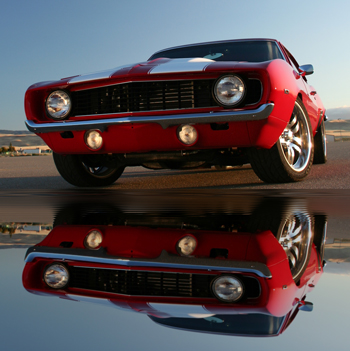 Car Stars
Car Stars
Great car movies such as “Bullitt” and “American Graffiti” heightened the visibility of the muscle car and street performance culture.
Baby boomers wanted to go fast even if they were just driving to the grocery store. The open road was calling and America answered.
But, the government intervened and quickly started killing the culture in the early to mid-’70s.
Then the gas crisis of the late ’70s put the final nail in the coffin.
Or did it?
Fast-forward 40 years and there’s a new generation of muscle cars on the road that reflect the nostalgic emotions of these classic performers from the ’60s and ’70s.
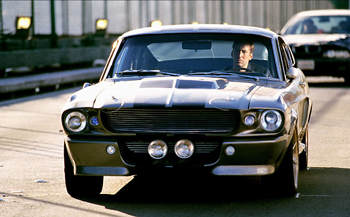
In recent years, Hollywood again found it successful to churn out films whose “stars” are often a four-wheeled beauties from the past like the 1967 Ford Mustang Shelby GT500 from “Gone in 60 Seconds,” Bumblebee, the Chevrolet Camaro from “Transformers” and the 1970 Dodge Charger from the early “Fast and Furious” films.
Today, we have modern muscle that is every bit above the fold as the cars from the past.
A new generation of Mustangs, Camaros and Challengers are prowling the streets and owners are still looking for more power just like they did in the past.
Only this time, there are more electronics for engine specialists to contend with.
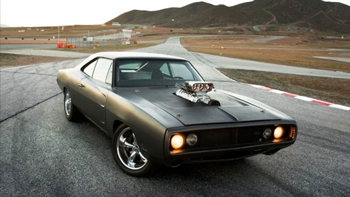
Road to Recovery
According to statistics from Hagerty, a collector car insurance company, the muscle car collector market hasn’t recovered to the levels it was at before the 2008 economic meltdown.
But the good news for collectors of these vehicles is that the prices have stabilized and even grown for most of the cars in the sector.
For engine builders and performance specialists, that may not mean so much, but what is important is that there is still strong interest in these cars even after 40 years.
In fact, it may even be stronger now than it has been in the past, especially when you count the modern muscle and custom builds.
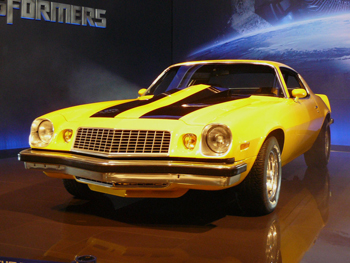
The majority of the street performance market is made up of classic or modern muscle, in large part thanks to the small block Chevy, which has become ubiquitous among the performance crowd.
If you, down the road, have a customer who has a numbers-matching muscle car, chances are he or she’s not going to buy a crate engine for it unless it’s to swap out for some daily driving without putting the abuse on the original, more valuable engine.
Collectors may wish to restore their numbers-matching engine back to original specs, only this time using modern parts and techniques to rebuild them.
And according to our experts, there are a great number of these owners who want more power and hope to bring their classic muscle car into the modern age.
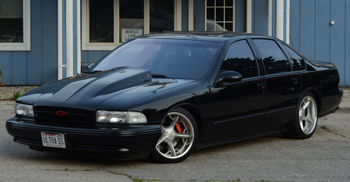
Unfortunately, there are some horror stories out there about owners who take their cars to hot rod shops only to get it back with an engine problem.
One engine builder we spoke to said that there’s a wide spectrum of competency out there in the muscle car and hot rod realm.
Many of these shops are not capable of rebuilding an engine, nor even assembling one.
Of course, this disclaimer, before we get the hate letters: we understand that there are good ones out there too that do quality work and partner with good engine builders.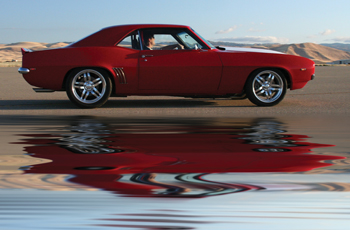
Experts say, in fact, that there are GREAT opportunities to go out and partner with other hot rod shops that don’t have the capability or equipment to do the work in-house.
Shops want to keep as much of the profit in-house and may only send you the machine work. But YOU should be doing all of the engine build.
You may give them a discount for the work since they are doing all the selling and dealing with the customer. But since it’s YOUR name on the engine plate, you want to make sure you protect your reputation.
One of the difficulties with building engines for the muscle car market is that some of the more obscure applications, such as the Buick Grand National, can be hard to find parts for now. They’re not quite old enough to be vintage, but they’re still collectible. So you may have a hard time finding a crankshaft for this application, for example, because most of the cores are worn out and not many make an aftermarket replacement.
Revving Interest
While some specific parts may be hard to come by, parts manufacturers for muscle cars and other performance vehicles are seeing growth in this market.
Sales of automotive specialty-equipment products continue to climb, reaching $33 billion in 2013. The number represents a 6.7 percent increase over the previous year and marks the fourth consecutive year of growth, according to the SEMA Annual Market Study that is available at www.sema.org/2014samr.
“The Specialty Equipment Market produced the highest growth since the recent recession,” said Chris Kersting, SEMA president and CEO. “There are a number of factors that figure into this upward trend.”
One of those factors is Kersting noted is that street performance products – which includes muscle car products – accounted for 26% of sales last year.
The renewed focus on performance models by the OEMs has helped drive interest in this segment. New models such as the Scion FR-S, and muscle redesigns like the 2015 Mustang, and high-performance packages such as the Hellcat Challenger have inspired the industry and consumer alike to aim for increased performance.
Another factor is an improving economy.
According to SEMA, the U.S. economy continues to show positive signs for industry growth, with gross domestic product rising and unemployment rates dropping. Forecasters are generally predicting sustained moderate growth for the U.S. economy over the next few years.
Meanwhile, car buyers have shown renewed enthusiasm, pushing new-vehicle sales upward toward pre-recession levels.
Top Muscle
Over the years, there have been many arguments over the greatest engines of the muscle car era. A lot of that chatter is often based on which auto brand a particular enthusiast follows.
But, according to Tony Begley of the Muscle Car Club (www.musclecarclub.com), there are different factors engine enthusiasts like he use for naming the top muscle car powerplant. Some of these engines were tuned for horsepower (top speed) while others were tuned for torque (acceleration). Still others were seriously under-rated to keep a low profile and keep insurance agents guessing.
Begley created a profile on some of the greatest engines ever installed in a muscle car. Some were mass production engines, others were true race engines quietly slipped into street cars. For simplicity sake, they are listed by manufacturer.
According Begley, the following are the greatest muscle car engines of all time:
1965 Ford/Mercury 427 Cammer
The most powerful engine ever made was the Ford 427 Cammer, which was developed with the intention of taking on Chrysler’s Hemis. Ford gave the 427 block new heads with hemispherical combustion chambers. To cap that, they fitted overhead camshafts – one per cylinder bank – which gave the engine its name and allowed it to rev to an unheard of 7,500 rpm. With the regular single four barrel carb, the “cammer” put out 616 hp, but with dual four-barrels, it produced a massive 657 hp. With this kind of power, the “cammer” 427 was totally unsuitable for street use. These engines were not sold to the general public, but about 50 examples were built, mostly for professional drag racers.
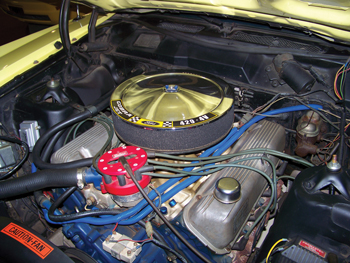
Ford 428/429 Cobra Jet 1968-1971
Ford unveiled perhaps its most famous line of engines, the 428 Cobra Jet, in 1968.
It was based on the regular 428, but included larger valve heads, the race 427’s intake manifold and an oil-pan windage tray.
It had ram-air induction and breathed through a functional hood scoop. Output was listed at 335 hp, but was rumored to be around 410 hp.
The 428 Cobra Jet engines were replaced in 1970 by new 429 Cobra Jet engines.
The 429 CJ was rated at 370 hp while the Super Cobra Jet had 11.3:1 compression and was rated at 375 hp.
Buick 400/455 Stage 1 1968-1973
In a nod to the performance market that was driving muscle car sales, Buick quietly introduced a rare dealer-installed option in 1968 which treated the 400 cid engine with a hotter cam, 11.0:1 compression, stronger valve springs and a reworked transmission. Officially pegged at a mere 345 hp, or just a 5 hp increase over the base 400 cid engine, experts believe that it was more like 390 hp and it dropped 1/4 mile times by 1 second or more. It was called the “Stage 1 Special Package” and was an indicator of great things to come.
1970 saw the greatest Buick engine of all time. GM finally lifted its corporate ban of engines larger than 400 cubic inches in an intermediate body and Buick responded by stuffing a brand new 455 cubic inch engine into its restyled GS. The 455 boasted more displacement, bigger valves and a hotter cam than the 400 and was also mated to standard cold air induction through functional hood scoops. The 455 was rated at 350 hp and a stump pulling 510 lb.ft. of torque. This was the highest torque rating of any production engine besides Cadillac’s 472 and 500 cid V8s, and no engine achieved it at a lower rpm (2,800 rpm)

Chevrolet 409 1961-1963
In 1961, Chevrolet introduced its 409 cubic inch V8, the engine that would launch the Big Three auto manufacturers into the horsepower race that would last well into the 1970s.
The 409 was actually a response to Ford’s new 390 cid engine, which was outperforming Chevys on the dragstrip.
Although it put out “only” 360 hp compared to Ford’s top 375 hp, those extra 19 cid gave it respect on the street and immortalized it in song (“She’s real fine, my 409”).
Unfortunately, the 409 already came with 11.25 compression and a four barrel carburetor, and due to its wedge-shaped combustion chambers, was not very easy to improve performance further.
In 1962, the 409 was improved by adding new cylinder heads and a revised camshaft. With the standard 4 bbl carb, the 409 produced 380 bhp.
Chevrolet 427 ZL1 1969
The ZL1 engine was based on the regular Chevrolet 427 engine. However, instead of the regular iron-block and head L72 found in the regular 427 engine, the ZL1 sported aluminum heads and the first aluminum block ever made by Chevrolet.
It shared the L88 aluminum head/iron block’s engine rating of 430 hp, but made closer to 500 hp – making it probably the most powerful engine Chevrolet ever offered to the public. And the engine weighed just 500 pounds, the same as Chevy’s 327 small block. The ZL-1 was made available only for 1969 under COPO 9560 and Chevrolet needed to install 50 copies to qualify the ZL1 Camaro for racing.
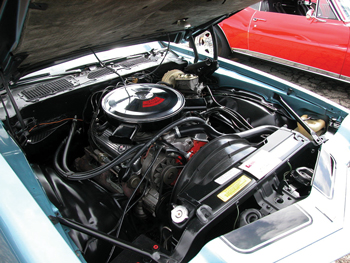
Chevrolet 302 1967-1969
In 1967, Chevrolet quietly created a Z/28 option for its new Camaro. Specifically designed to compete in the Sports Car Club of America Trans Am racing series, which placed a 305 cid limit on its entries, the Z/28 was available to the public solely to qualify for racing.
What you got was a unique 302 cid small block that was created by taking the 327 block and installing the short-stroke 283 crank.
Advertised horsepower was listed at just 290 hp, which was not very impressive until one hooked it up to a dyno and got actual readings of 360-400 hp.
The Z/28 Camaro proved to be difficult to launch on the street because its high revving engine was lethargic under 4,000 rpm and worked best when it was shifted at 7,500 rpm.
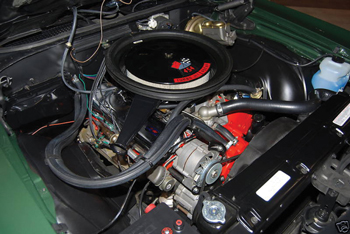
Chevrolet 454 LS6 1970
When General Motors lifted its ban on engines larger than 400 cid in intermediate cars in 1970, Chevrolet responded by creating two new 454 cid V8s, the LS5 and LS6, and stuffed them into their Chevelle and El Camino.
The LS6 used the same block as the LS5, but added on a 800-cfm Holley four barrel on an aluminum manifold, 11.25:1 compression, solid lifters, four-bolt mains, forged steel crank and connecting rods, forged aluminum pistons and deep-groove accessory pulleys.
The LS6 would be a one year only engine as the GM mandated switch to unleaded fuel in 1971 sealed its fate.
Pontiac 421 Super Duty 1962-1963
In the early 1960s, auto racing was hot and Pontiac offered a tremendous selection of performance parts and options under the name “Super Duty.” At the top of the Super Duty option list was a special line of Super Duty engines, based on its 421 V8, which Pontiac offered to the public in order to meet new NHRA rules changes that required engines and body parts for the stock classes to be production options on retail vehicles. The 1962 Super Duty 421 was officially rated at 405 hp, but true output was rumored to be around 460 hp. Although street legal, these engines were truly race ready with four-bolt mains, forged rods and crank, solid lifters, and NASCAR heads.
Pontiac 455 Super Duty 1973-1974
The Super Duty 455 V8 (SD-455) was introduced in the Pontiac Firebird in 1973. “Super Duty” was the name Pontiac used on its high performance (i.e. race ready) engines in the early 1960s, and the Super Duty 455 was a street legal race prepped engine. All SD-455s were hand assembled, and had a reinforced block, special camshaft, aluminum pistons, oversize valves and header-like exhaust manifolds. Pontiac rated the SD-455 engines at a stout 310 hp and 390 lb.ft., but experts agreed that it was closer to 370 hp.
Mopar 413 Wedge 1963-1965
With the introduction of the 426 Max Wedge in 1963, the 413 Max Wedge was dropped from the Dodge and Plymouth lines, but the 413 in milder states-of-tune remained available in Chrysler cars.
For 1963, you could order a single four-barrel 413 developing 340 hp at 4600 rpm and 470 pounds-feet of torque at 2,800 rpm. Compression ratio was 10.0:1. There was also a dual four-barrel setup that developed 390 hp at 4,800 rpm and 485 pounds-feet of torque at 3,600 rpm.
Mopar 426 Max Wedge 1962-1965
In 1964, Chrysler introduced the 426 Max Wedge Stage III. Improvements included larger-capacity Carter carburetors and larger air cleaners to accommodate them: a new camshaft with 320 degrees of overlap: modified combustion chambers with deeper clearance notches around the valves; 13.0:1 pistons replaced by 12.5:1 pistons in the higher-compression engine: and new exhaust manifolds designed for NASCAR racing.
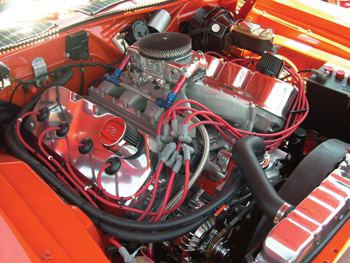
426 Hemi 1964-1971
As most Mopar enthusiasts know, the 426 Hemi was not the first Chrysler Hemi, but it was the best.
Whereas the Hemis of the 1950s were passenger-car engines, the 426 Hemi of 1964 was conceived strictly as a race engine, from the oil pan up. Its purpose was to win big on the NASCAR circuit and dominate organized drag racing.
The street Hemi was introduced in 1966 in the Plymouth Belvedere and Dodge Coronet and Charger. Both engines were very similar. The street and race Hemi had the same cast iron, stress-relieved block with a bore and stroke of 4.250×3.750 inches.
The forged, shot-peened and Nitride-hardened crankshaft was the same for both street and race Hemi, as well as the impact-extruded pistons, crossbolt main bearing caps, forged connecting rods, iron cylinder heads and mechanical lifters.
Despite all the modifications, the street Hemi’s advertised horsepower and torque ratings stayed at 425 hp at 5,000 rpm and 490 foot-pounds of torque at 4,000 rpm. Many people claim the output was closer to 500 hp.
Terms of Endearment – Performance Defined
Crate Engine: As the name suggests, a crate engine is a complete engine that is delivered in a crate/container. Though the term could apply to the completely stock long-blocks sold by retailers, it generally refers to those ready-to-install powerplants sold by the aftermarket. These engines are also popular in sportsman racing series to provide engine equality among the race cars.
Muscle car: A term used to refer to a variety of high-performance, American-made sports coupes with powerful engines designed for high-performance driving. Muscle cars are normally powered with a large V8 engine fitted in a 2-door, rear wheel drive, family-style mid-size or full-size car designed for four or more passengers. Muscle cars are intended for mainly street use and occasional drag racing and include such vehicles as the Pontiac GTO, Chevy Chevelle SS, Plymouth Barracuda, and Dodge Charger.
Pony car: This refers to an American class of automobile launched and inspired by the Ford Mustang in 1964. The term describes an affordable, compact, highly styled car with a sporty or performance-oriented image. Other pony cars may include Chevy Camaro, Dodge Challenger, Pontiac Firebird and the AMC Javelin.













